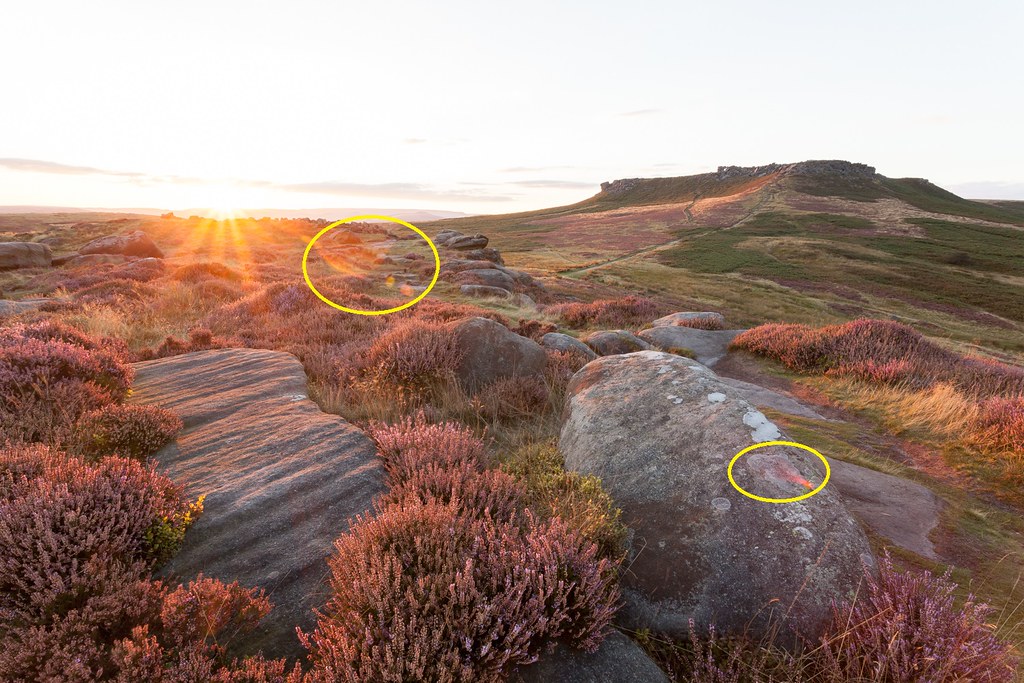A few times in the last few weeks the conversation about avoiding lens flare has come up - so I thought I'd just put up a quick post about this well known, but underused technique...
I'm not going to go into the details of merging photos and whatnot, there's plenty of information out there for anyone wanting to learn more about that, but I am going to show you how important this is even when the sun itself is not in the frame. When the sun is in the frame, there are often obvious flaring problems visible in the image - made worse when adding further pieces of glass to the front of the lens when using filters... which is just one of the many reasons I prefer to blend exposures instead. For example:
 |
| Excuse the blown out sky! |
Along with the two sections highlighted, you might also notice the large red blotch right in the bottom right corner - it coincides with the heather so is well hidden, but still there. Still, these obvious signs usually hint at something wrong - so we try to correct it. This can be done in the simplest of ways... by shoving your finger in front of the sun...
 |
| Problem solved. |
When the sun is not in the frame, however, the signs are less obvious - but I hope to show you that this problem is still worthy of consideration. So let's take a look at another photo, with no visible sun...
Just to make sure I'm not exaggerating - here's the shot of the sky for the next set of images, with the sun nowhere near the confines of the image itself...
 |
| Sun comfortably out of frame. |
This is where we come to highlight the secondary type of lens flare, less visible in the top example but present both in that and here - general light leakage. The sun may not be in the frame, but it's still hitting the front lens element (as no lens hood is perfect!), and subsequently being reflected around the inner lens workings before adding a general haze to the final image. Just see the before and after, in terms of the finger technique...
 |
| Before and after - without the sun in the frame. |
There may have been some loss in tonality due to using a GIF to demonstrate that last example - but the effect is as obvious as it is horrible. Without the finger that stray light warms up the entire shot and reduced the contrast in all of the shadows - this loss of information is what all landscape photographers battle against, so although the blacks can easily be deepened and the colour balance easily restored, the resulting file couldn't possibly retain as much true to life information as could be achieved using a simple finger.



No comments:
Post a Comment